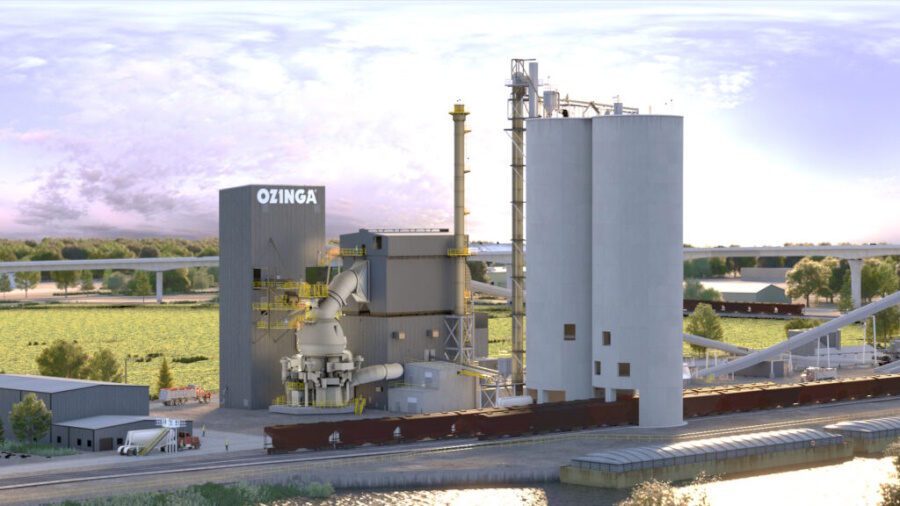Uncategorized
Ozinga Breaks Ground on Low-Carbon Cement Plant in East Chicago
Concrete and building material supplier Ozinga has broken ground on a low-carbon cement manufacturing facility planned for East Chicago, Ind. Expected to be completed by the second quarter of 2026, Ozinga says it will the largest low-carbon cement manufacturing facility in North America.
“Supplementary cementitious materials have changed the game quite a bit,” said Maty Ozinga, CEO of Ozinga. “Lower carbon concrete definitely is picking up steam.”The facility was designed by Ozinga to have, at its heart, a MVR5300-C6 vertical roller mill from Gebr. Pfeiffer. Ozinga said it would be the largest of its kind in North America when completed with six independent rollers. The mill was designed to maximize energy efficiency while minimizing carbon emissions.“This isn’t just a plant—it’s a technological milestone,” said Timothy Burden, president of Gebr. Pfeiffer Americas. “The MVR5300-C6 sets a new benchmark for sustainable cement production.”The facility will produce ASTM C989-compliant low-carbon slag cement, as well as proprietary blends under Ozinga’s CarbonSense brand, meeting ASTM C1157 performance standards and delivering up to 80% reductions in embodied carbon. Once fully operational, the plant is projected to offset more than 700,000 metric tons of CO₂ emissions annually, a significant reduction in the carbon footprint of U.S. construction.”The facility is planned to produce ASTM C989-compliant slag cement and other low-carbon cement blends that can help cut embodied carbon in concrete by up to 80%.
The world’s largest vertical roller cement mill is currently an FLSmidth OK81-6 vertical mill, with a grinding table diameter of 26 ft, 6 in, and roller dia of 8 ft, 7 in., owned by Shah Cement Industries Ltd. in Dhaka, Bangladesh, in 2018. Holcim has several comparable Gebr. Pfeiffer cement mills in Belgium but none in North America. Ozinga has supplier partnerships with Meta, the University of Illinois Urbana-Champaign, and Amazon Web Services. These collaborations have seen large usages of low-carbon concrete in Meta’s DeKalb, Ill., data center, and enabled a 64% reduction in embodied carbon at the Amazon Web Services’ data center in New Carlisle, In.”Many times, it’s not the contractor, but the client, ultimately, that has low-carbon concrete as part of their goals, and the hyper scalers definitely have those built into their plans,” Ozinga said. “Data centers are one area where we’re seeing those goals almost as much as anywhere else. The client themselves —the owner or the developer — they’re promoting it and pushing it and asking for it.”


